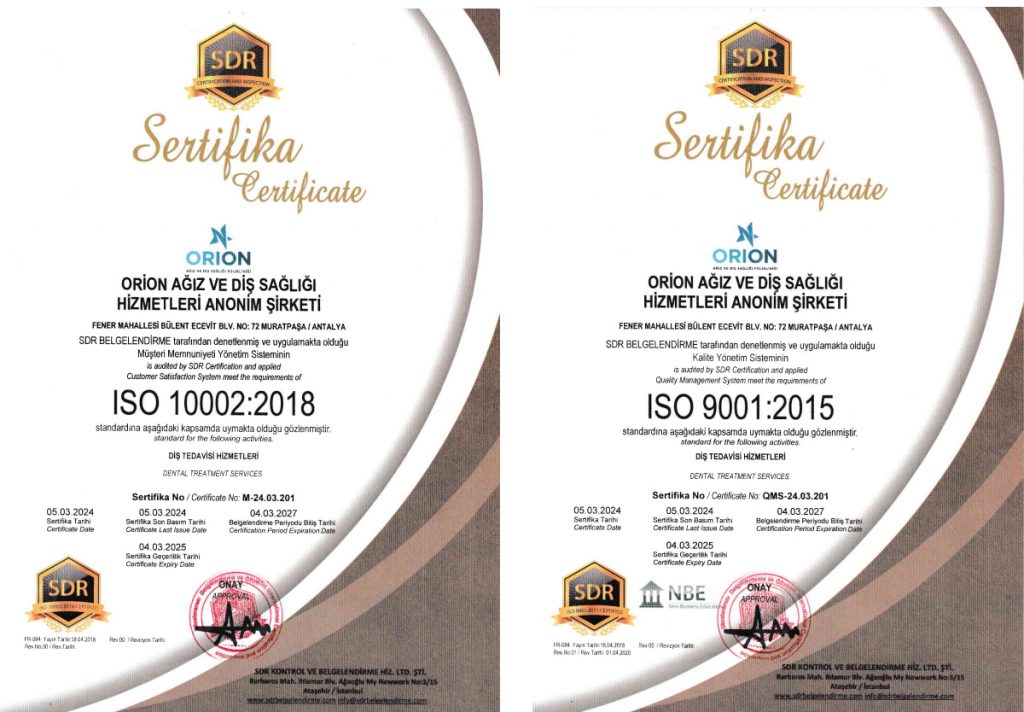- Fener Mah. Bulent Ecevit Blv. No:72 Muratpasa/ANTALYA

They are tooth-colored fillings, also known as white fillings among the people. They are made of composite resin-based material. When they are in a pasty consistency, they are placed on the teeth and brought to a hard consistency with halogen or LED light sources. They chemically bond to the tooth. It is difficult to distinguish the presence of a well-made composite filling.
With the developing technology, the content of the composite fillings we use has been strengthened. After the decay is cleaned, it chemically binds to the remaining tooth tissue, making the tooth more resistant to fractures.
It varies according to the selected material, application sensitivity, oral hygiene and nutritional habits of the patient, usually for 10-15 years, sometimes more.
Composite fillings are not suitable for use if there are large gaps in the teeth, as composite fillings cannot stand on large areas. Ideal for small spaces (they are not resistant to extreme forces.
Composite fillings are durable if they are not subjected to excessive force.
Before the composite filling is made, the tooth surface is thoroughly cleaned, bevelling is performed to increase the bonding surface of the filling, cotton pads are placed around the tooth or wrapped with a rubber dam to isolate it, bonding is performed between the tooth and the composite filling. Bonding is given light and cured, then composite filler is placed in thin layers and hardened with Beam. This process is repeated until the caries cavity is filled.
When composite fillings were first used (in the 60’s), they were used only on the front teeth. With the developments, they started to be used in the posterior teeth as they were resistant to chewing pressures and had low wear properties.
The biggest advantage of the composite filling is that it is aesthetic, the color of the tooth, and the polishing process can be done immediately after the filling.
They look natural and aesthetic, do not cause any allergic reaction, and are compatible with oral tissues.
Disadvantages; they do not have any serious disadvantages. They can cause temporary sensitivity in teeth; Drinks such as coke, tea, alcohol, smoking cause discoloration in composite fillings.
Which teeth are composite fillings applied to? (Composite filling applications for anterior teeth)
Composite fillings were often used on the front teeth to serve aesthetics, and can now be used in every part of the mouth, namely molars.
In front teeth; They are used as filling material for decayed, broken, worn teeth, to correct the appearance of colored teeth, to close the gaps between the teeth (diastema).
Teeth may be sensitive to heat and cold after a while, may cause pain during chewing, filled teeth are injured teeth and need time to heal. All these ailments will pass within 1-2 months.
Resins that can bind to enamel and dentin tissues with adhesives systems were first developed in 1962. Although these systems have undergone some structural changes over the years, they continue to develop today.

Copyright © 2022 Orion. Tüm Hakları Saklıdır.